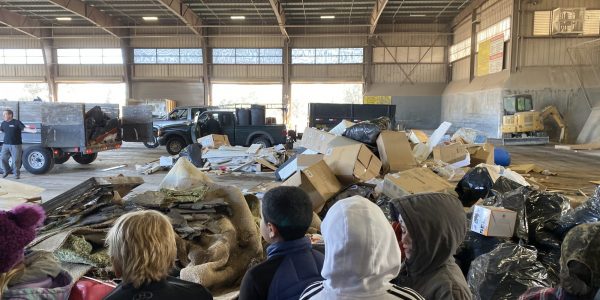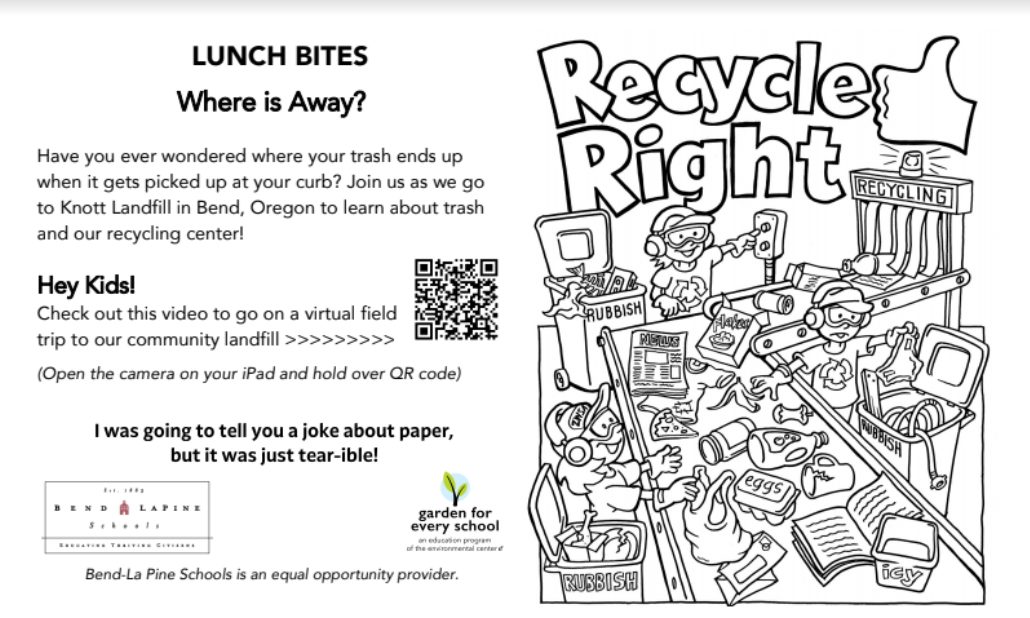Where Is Away?

This week’s Lunch Bites Highlight focuses on sustainable living and specifically, where our garbage goes once we throw it away. Helping our young learners understand the journey garbage takes can help them make conscious decisions about what to throw away, and what to recycle. Each day, the average person will dispose of around 5 pounds of garbage. That is a lot of garbage! Once thrown away, where does it all go?
Once our garbage is collected, it goes to Knott Landfill, located in Deschutes County. Large trucks compress the garbage so it can be buried in a large hole in the ground. While this helps get rid of our garbage, there can still be risks to burying trash in the ground. One risk is harmful gases, such as carbon dioxide and methane. It is estimated that about 26% of Knott Landfill is food waste. When buried in a landfill, food waste increases the rate of these harmful gases in our atmosphere. To prevent health and environmental risks such as harmful gas, tools such as recycling, reusing, and composting are beneficial to use. Paper can be recycled and reused instead of being buried in a landfill. This website has a list of what can and cannot be recycled in our local landfill.
Now that we know where our trash goes, what can we do about it? Teaching our families and young ones the importance of recycling and other beneficial tools can reduce waste that enters the landfill. Understanding how landfills operate and how they affect our environment can also encourage conscious thinking and decision making. Our Lunch Bite Highlight this week includes a detailed video of Knott Landfill located here in Bend, Oregon. Knott Landfill also houses a compost and recycling center for public use. This helps promote eco-friendly habits to keep our environment safe!
To download more Lunch Bites with videos, coloring, and facts for young learners in both English and Spanish, click here.
